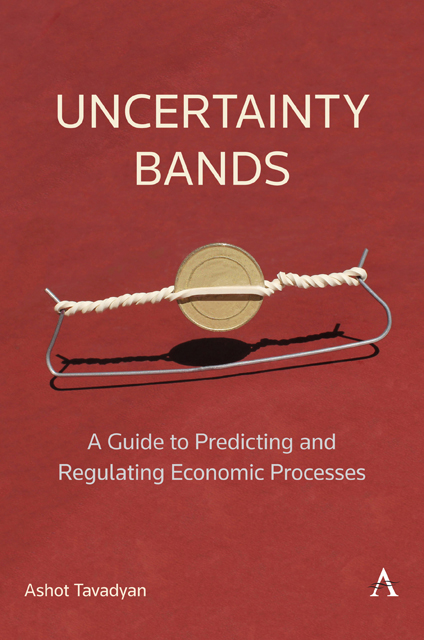Book contents
- Frontmatter
- Contents
- Preface
- Introduction: The Philosophy of Economic Forecasting
- 1 Interval Links in Economy and the Capabilities of Quantitative Thinking
- 2 The Possibilities for Forecasting Economic Indicators
- 3 The Principle of the Minimal Uncertainty Interval
- 4 The Intervals of Key Economic Indicators
- 5 Key Principles of Economic Regulation
- Conclusion
- Appendix: The Uncertainty Relations of Economic Indicators
- Acknowledgments
- Index
2 - The Possibilities for Forecasting Economic Indicators
Published online by Cambridge University Press: 09 December 2022
- Frontmatter
- Contents
- Preface
- Introduction: The Philosophy of Economic Forecasting
- 1 Interval Links in Economy and the Capabilities of Quantitative Thinking
- 2 The Possibilities for Forecasting Economic Indicators
- 3 The Principle of the Minimal Uncertainty Interval
- 4 The Intervals of Key Economic Indicators
- 5 Key Principles of Economic Regulation
- Conclusion
- Appendix: The Uncertainty Relations of Economic Indicators
- Acknowledgments
- Index
Summary
The Effect of Compressed Spring
The rules of the economic game are continually changing or the unreliability of the past-based forecasts
Equilibrium can be dangerous. With the accumulation of negative phenomena and with the transition of their quantity to a new quality, the “spring” of accumulated problems may be suddenly released. An unexpected issue in the market causes the spring to rebound. Incorrectly implemented policies that mainly focus on one economic indicator wind the spring up. Paradoxically, small doses of deviations, in contrast to rigid stability, reduce the risk of reaching the threshold of critical fluctuation. Moreover, slight stress allows to identify the weak links in the system. It is highly advisable to denote that a seemingly stable economic situation is by no means equivalent to a low-risk situation of negative consequences, especially in unforeseen circumstances.
Econometric or other forecasting methods, based on data of even a long-term stable development or even a minor crisis, cannot, by definition, predict a future crisis caused by newly emerging factors, especially with high accuracy. In those cases, the examined variable is presented as endogenous, which means that the variable is determined by the model. The forecast is then car-ried out based on those values of selected economic variables, defined as exogenous, which are determined outside the model. The result is based on the analysis of observations of the past behavior and works only for the past, that is, for the already available data. However, the situation in the economy is volatile, sometimes subject to significant changes. The relations between variables based on already known data can always be formulated, although the forecast based on the past values of endogenous variables is rather uncertain.
In mathematical methods, the possibility of a significant economic change and the factor of uncertainty are often underestimated. At the same time, artificial patterns are revealed, and cause-and-effect relations are presented in an explicit form where they may not exist. Accepting an outcome after a certain procedure does not mean it has resulted from that same procedure, since the cause-and-effect relations are by no means chronological.
Econometrics can produce veritable results for the future only where the dynamic processes are not subject to significant changes.
- Type
- Chapter
- Information
- Uncertainty BandsA Guide to Predicting and Regulating Economic Processes, pp. 17 - 26Publisher: Anthem PressPrint publication year: 2022



